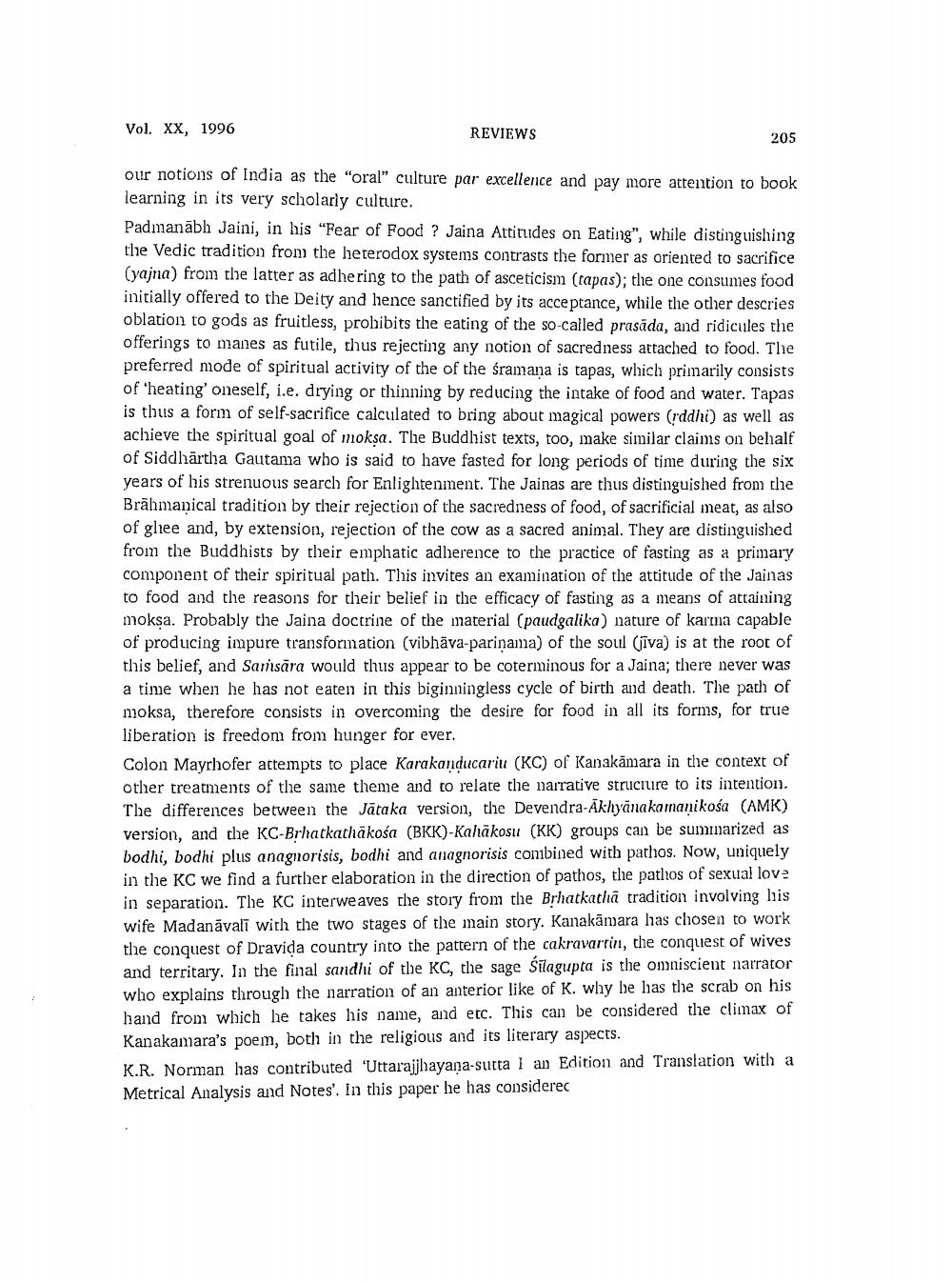________________
Vol. XX, 1996
REVIEWS
205
our notions of India as the "oral" culture par excellence and pay more attention to book learning in its very scholarly culture. Padmanābh Jaini, in his "Fear of Food ? Jaina Attitudes on Eating", while distinguishing the Vedic tradition from the heterodox systems contrasts the former as oriented to sacrifice (yajna) from the latter as adhering to the path of asceticism (tapas); the one consumes food initially offered to the Deity and hence sanctified by its acceptance, while the other descries oblation to gods as fruitless, prohibits the eating of the so-called prasāda, and ridicules the offerings to manes as futile, thus rejecting any notion of sacredness attached to food. The preferred mode of spiritual activity of the of the śramana is tapas, which primarily consists of 'heating' oneself, i.e. drying or thinning by reducing the intake of food and water. Tapas is thus a form of self-sacrifice calculated to bring about magical powers (ddhi) as well as achieve the spiritual goal of moksa. The Buddhist texts, too, make similar claims on behalf of Siddhartha Gautama who is said to have fasted for long periods of time during the six years of his strenuous search for Enlightenment. The Jainas are thus distinguished from the Brāhmanical tradition by their rejection of the sacredness of food, of sacrificial meat, as also of gliee and, by extension, rejection of the cow as a sacred animal. They are distinguished from the Buddhists by their emphatic adherence to the practice of fasting as a primary component of their spiritual path. This invites an examination of the attitude of the Jainas to food and the reasons for their belief in the efficacy of fasting as a means of attaining moksa. Probably the Jaina doctrine of the material (paudgalika) nature of karma capable of producing impure transformation (vibhāva-parinama) of the soul (java) is at the root of this belief, and Samsāra would thus appear to be coterminous for a Jaina; there never was a time when he has not eaten in this biginningless cycle of birth and death. The path of moksa, therefore consists in overcoming the desire for food in all its forms, for true liberation is freedom from hunger for ever. Colon Mayrhofer attempts to place Karakanducariu (KC) of Kanakamara in the context of other treatments of the same theme and to relate the narrative structure to its intention. The differences between the Jätaka version, the Devendra-Akhyanakamanikosa (AMK) version, and the KC-Brhatkathākośa (BKK)-Kahākosu (KK) groups can be summarized as bodhi, bodhi plus anagnorisis, bodhi and anagnorisis combined with pathos. Now, uniquely in the KC we find a further elaboration in the direction of pathos, the pathos of sexual love in separation. The KC interweaves the story from the Brhatkathā tradition involving his wife Madanävali with the two stages of the main story. Kanakāmara has chosen to work the conquest of Dravida country into the pattern of the cakravartin, the conquest of wives and territary. In the final sandhi of the KC, the sage Silagupta is the omniscient narrator who explains through the narration of an anterior like of K. why he has the scrab on his hand from which he takes his name, and etc. This can be considered the climax of Kanakamara's poem, both in the religious and its literary aspects. K.R. Norman has contributed 'Uttarajjhayana-sutta 1 an Edition and Translation with a Metrical Analysis and Notes'. In this paper he has considered




